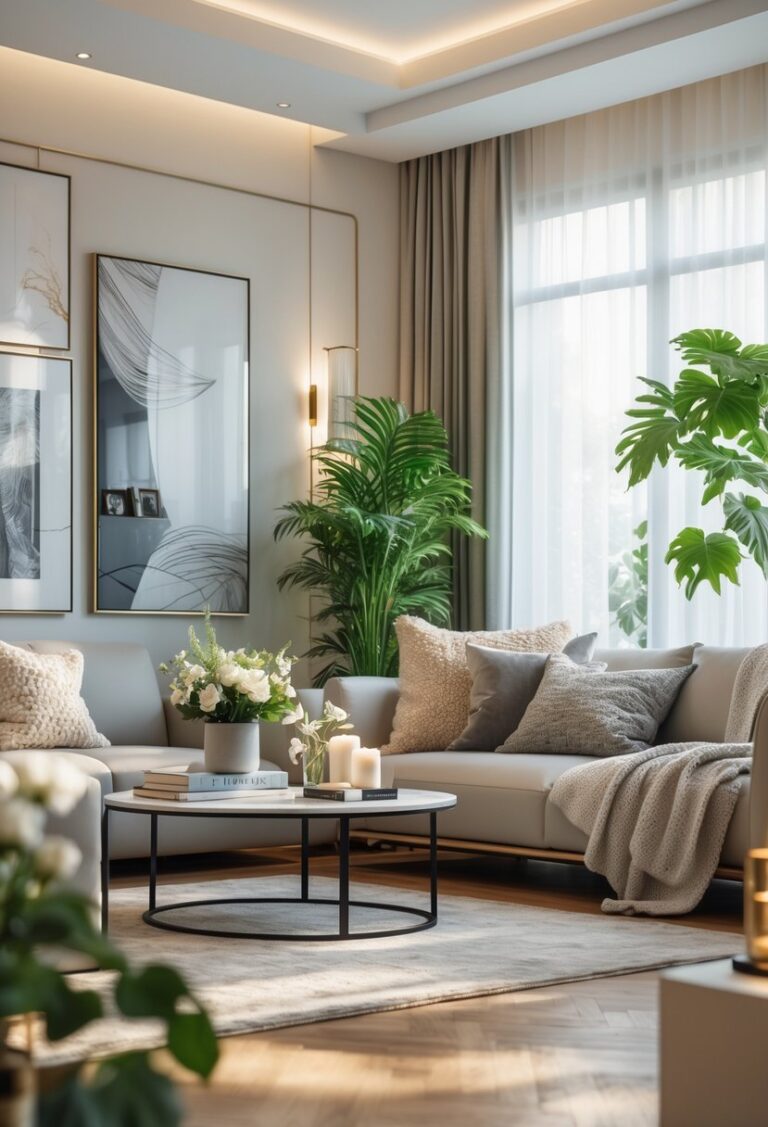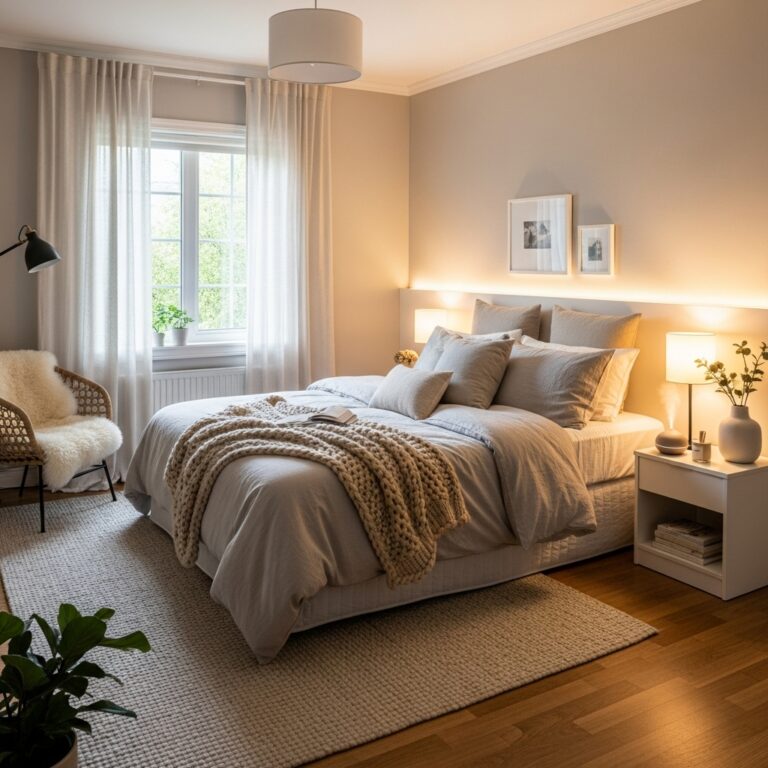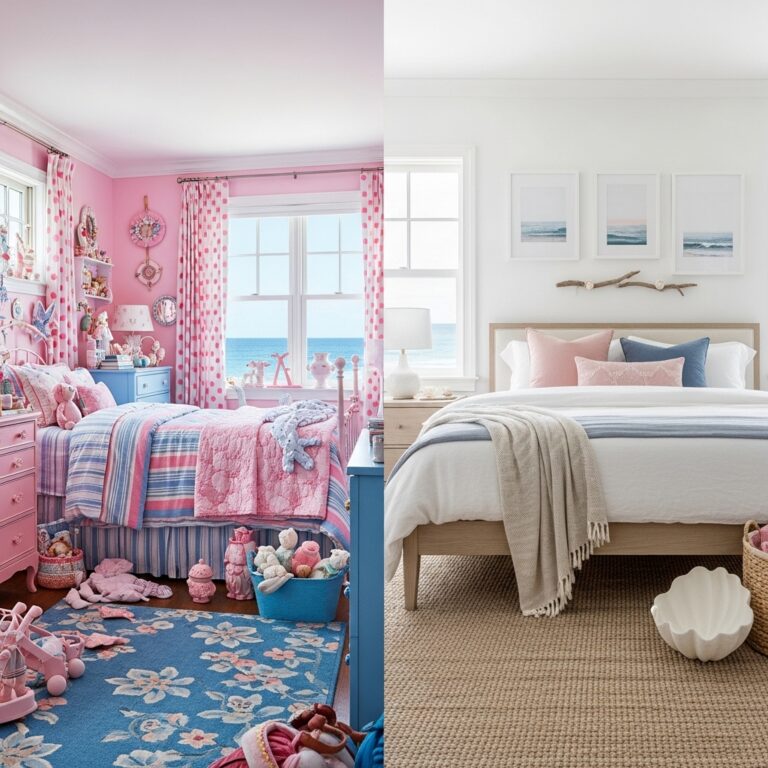Minimalist Bedroom Decor Ideas for a Clean and Modern Look
Bedroom Decor Ideas.
Creating a minimalist bedroom decor means focusing on simplicity and function. It involves choosing only what is needed and removing any clutter that distracts from rest and relaxation. A minimalist bedroom uses clean lines, calming colors, and essential furniture to create a peaceful, organized space.
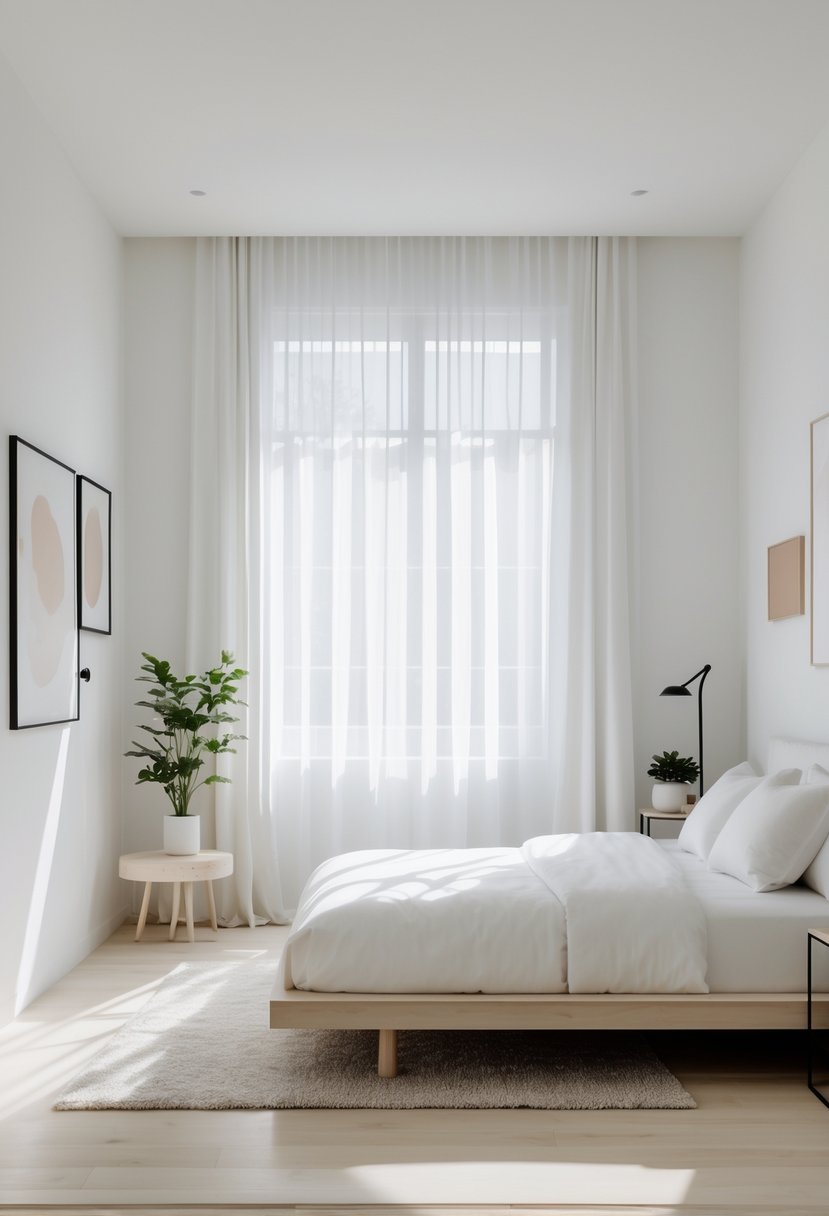
This style helps make the room easier to maintain and gives more freedom to adapt the space with small changes. Choosing the right bed, simple accents, and smart storage are key to keeping the room both stylish and practical. Minimalist decor is not just about looks but also about creating a calming retreat that supports well-being.
Small touches like natural textures or a limited color palette add personality without overwhelming the space. This approach fits any room size and helps turn a bedroom into a quiet refuge from daily distractions.
Key Takeways
- A minimalist bedroom focuses on simplicity and removing clutter.
- Essential furniture and calming colors create a peaceful atmosphere.
- Small decorative accents keep the space personal but organized.
Essential Principles of Minimalist Bedroom Decor
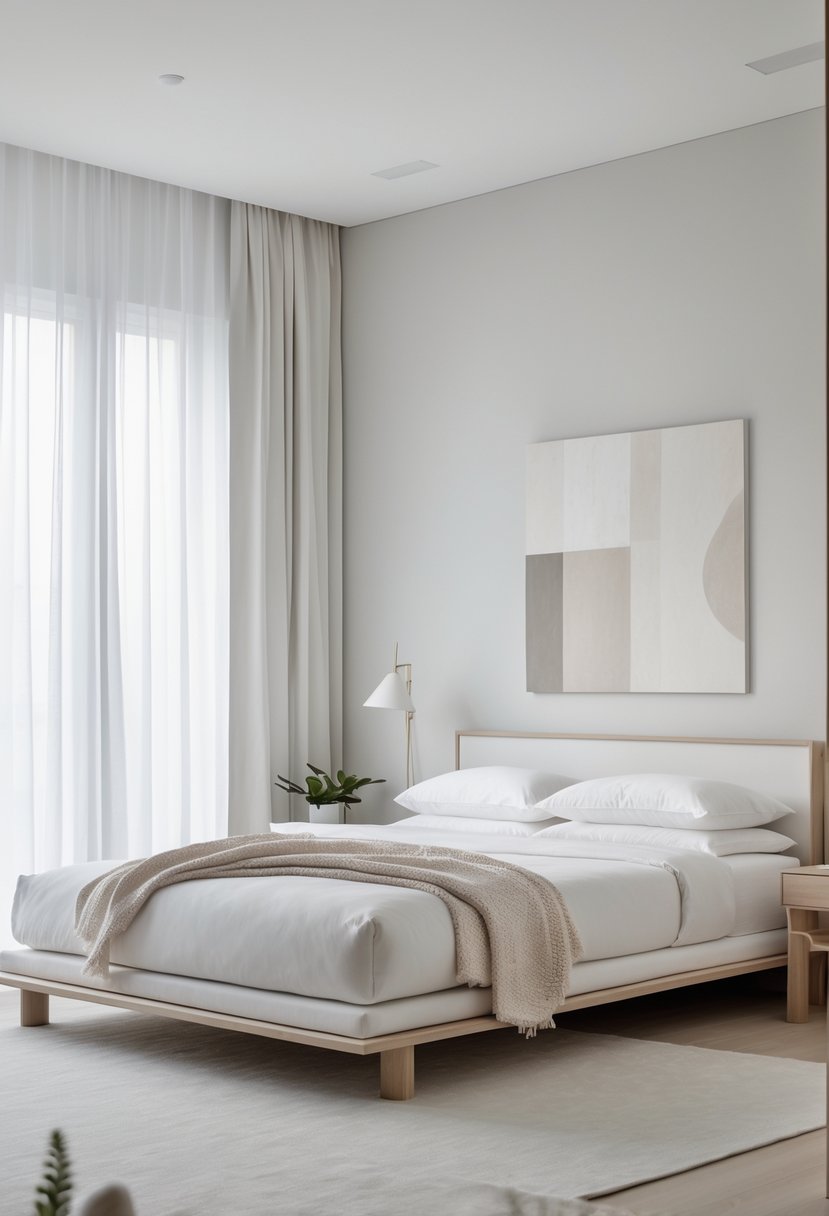
A minimalist bedroom focuses on removing clutter, using simple shapes, and keeping only what serves a clear purpose. Every choice—from colors to furniture—should help create a calm and functional space that feels open and easy to maintain.
Embracing Clean Lines and Simplicity
Minimalist decor relies on clean, straight lines without unnecessary details. Furniture often has smooth surfaces and simple shapes to avoid visual noise. It keeps the room feeling open and uncluttered.
Avoid ornate designs or busy patterns. Straight-edged beds, plain storage units, and unadorned window treatments work well. This approach helps the eye rest and prevents the space from feeling crowded.
Simplicity means focusing on essentials only. Each piece should have a clear function or a subtle aesthetic value. Items that do not add to the calmness or usefulness of the room should be removed.
Choosing a Neutral Color Palette
Neutral colors like white, beige, gray, and soft earth tones create a peaceful background. These shades reduce distractions and make the room feel light and spacious.
Using one or two colors consistently helps unify the design. Bright or bold colors are avoided to keep the atmosphere calm. Textures can add interest without breaking the neutral flow.
Walls, bedding, and large furniture usually carry the main color scheme. Small decor pieces may introduce subtle variations but should always blend smoothly to maintain balance.
Prioritizing Functionality in Design
In a minimalist bedroom, every item should serve a purpose. Furniture pieces that combine functions, like beds with storage underneath, help save space.
Storage is key to keeping surfaces clear. Closets, drawers, and boxes hide items not used daily. This prevents clutter from building up and keeps the room tidy.
Lighting also follows functionality. Soft, adjustable lights that support reading or relaxing are preferred. Decorative lighting should be minimal, adding warmth without overwhelming the space.
Key Minimalist Bedroom Elements
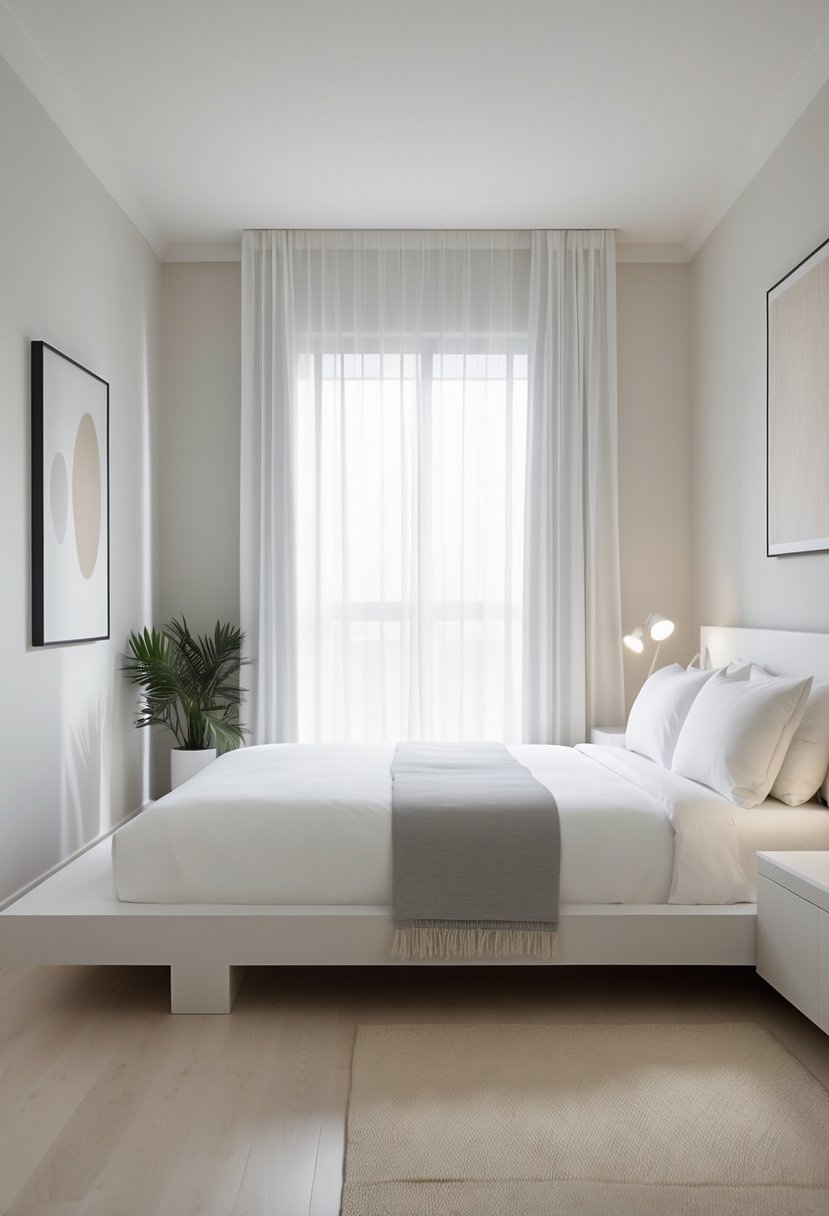
Creating a minimalist bedroom means focusing on simplicity, function, and calm. Thoughtful choices in furniture, storage, and lighting shape the space, ensuring it feels organized and relaxing.
Selecting Minimalist Furniture
Minimalist furniture features clean lines and simple shapes. It avoids extra decoration and focuses on pieces that serve a purpose. Beds with low profiles and narrow frames work well because they don’t take up too much visual space.
Furniture made from natural materials like wood or metal creates a calm feeling. Avoid bulky items that crowd the room. Instead, choose pieces with built-in storage or multi-use functions, such as a nightstand with drawers or a bench that doubles as storage.
Colors tend to stay neutral. Whites, blacks, grays, and soft earth tones keep the space feeling open and peaceful.
Maximizing Storage Solutions
Clutter disrupts the minimalist look, so storage helps maintain the clean, open feel. Built-in storage options, like shelves recessed in the wall or under-bed drawers, keep items out of sight while staying accessible.
Use organizers inside closets and drawers to keep small things tidy. Clear containers or baskets made from natural materials can also hold necessary items without looking messy.
Storage should blend with the room’s design. Matching colors and simple shapes help keep the visual flow smooth, avoiding distractions.
Optimizing Lighting Choices
Lighting in a minimalist bedroom emphasizes function and mood without creating clutter. Natural light is best, so window treatments should be minimal and allow plenty of sunshine during the day.
Choose fixtures with simple designs, like pendant lights, recessed lighting, or minimalist lamps. Warm-white bulbs help create a cozy atmosphere without harshness.
Layer lighting for flexibility. Combine overhead lights with task lighting near the bed for reading or relaxing. Adjustable lighting options add control over the ambiance, supporting rest and relaxation.
Styling and Personalizing Your Minimalist Bedroom
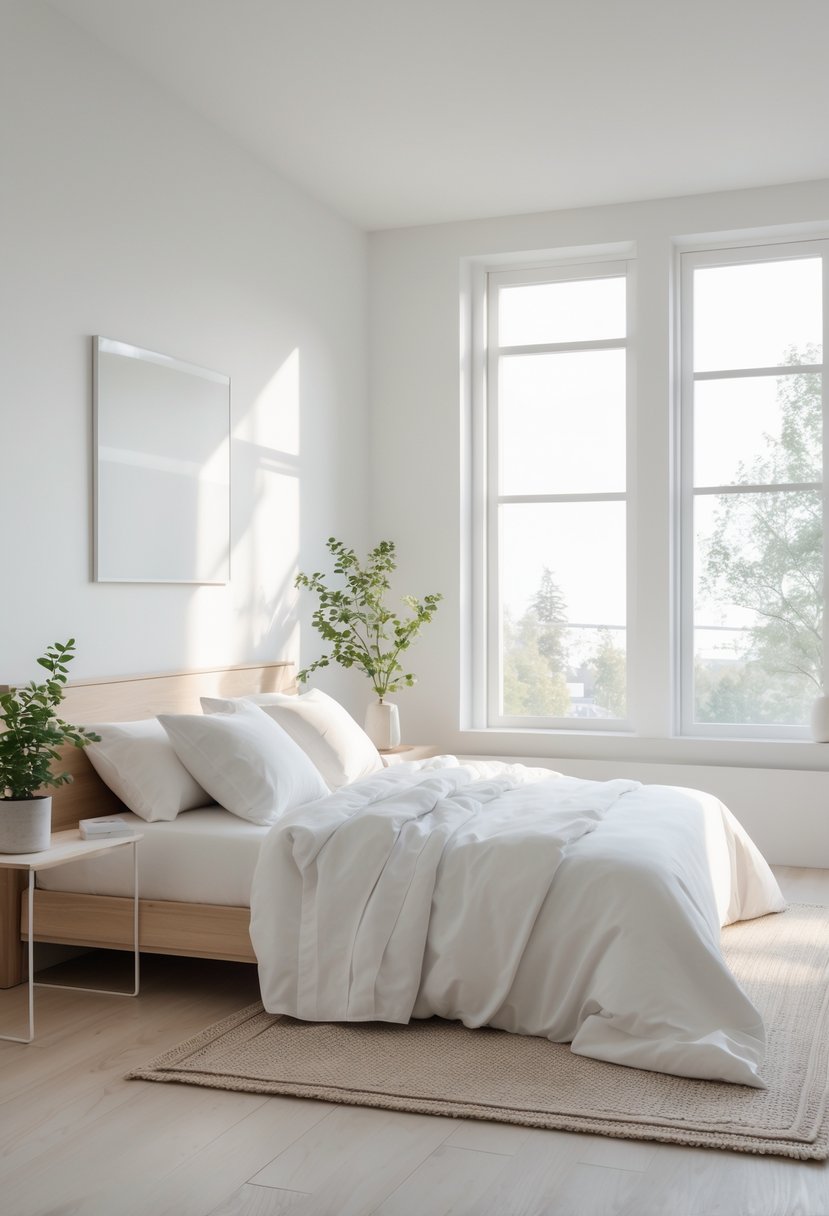
A minimalist bedroom should feel inviting without losing its clean, simple look. Using different textures, small decorative items, and natural touches can add interest without clutter. These details bring warmth and personality while keeping the design calm and functional.
Incorporating Textures for Warmth
Adding texture creates depth and comfort in a minimalist space. Soft materials like cotton or linen for bedding help keep the room cozy without overwhelming the look. A woven throw or knit blanket can add visual interest.
Rugs with simple patterns or natural fibers offer a tactile feel underfoot and help break up smooth surfaces. Textured pillows or curtains bring subtle layers that stop the room from feeling flat. Stick to neutral colors so the textures do not compete with each other.
Textures should be varied but gentle to maintain a peaceful mood. For example, a balance of smooth wooden furniture with rougher textiles achieves this well. This approach adds warmth while keeping the minimalist style intact.
Adding Subtle Decorative Accents
Decorative accents should enhance, not clutter, the room. Choosing a few meaningful items like a slim vase or simple sculpture can add personality without distraction. Minimalist artwork, such as line drawings or quiet color blocks, works well on the walls.
Mirrors with thin frames reflect light and create the illusion of space without adding bulk. Small trays or bowls serve as practical decor on nightstands or dressers, keeping small items contained and tidy.
Using a consistent color palette makes these accents blend with the room’s overall look. Avoid overly bright or busy pieces that break the calm atmosphere. Minimal, well-chosen decorations keep the bedroom stylish and personal.
Integrating Greenery or Natural Elements
Plants and natural materials provide life and freshness to a minimalist bedroom. Small potted plants like succulents or air plants require little care and add a gentle green touch. Placing them on shelves or windowsills keeps surfaces clear.
Natural materials such as wood, stone, or bamboo in furniture or decor emphasize simplicity and bring the outdoors inside. A wooden bedside table or stone planter fits well with minimalist themes while adding organic texture.
Using natural elements balances the clean lines of modern furniture. It strengthens the serene feel and connects the room to nature. Keeping plants and materials simple ensures they enhance rather than overpower the space.
Maintenance and Long-Term Tips
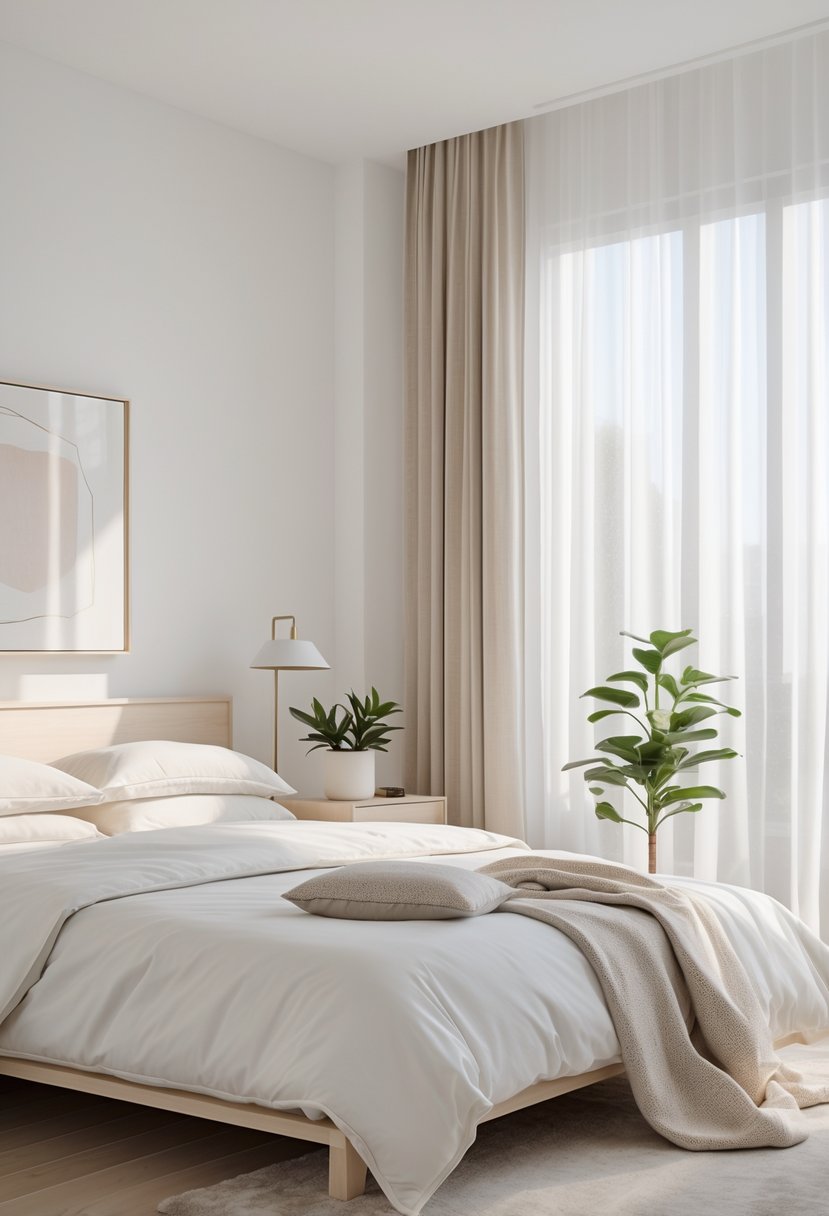
Keeping a minimalist bedroom tidy takes regular effort. Decluttering should happen often to prevent build-up of unnecessary items. They can set a weekly or monthly reminder to review belongings and remove what is no longer needed.
Storage solutions play a key role in maintaining a clean space. Using furniture with built-in storage, like beds with drawers or shelves, helps keep surfaces clear. Clear containers and labels also make organization easier and faster.
Lighting and color need occasional updates to keep the room feeling fresh. Soft, neutral tones work well over time, but small changes like new throw pillows or rugs can add variety without clutter.
Daily habits impact the room’s appearance. Making the bed every morning and putting things back in their place keeps the space orderly. Avoid bringing in too many items that do not serve a purpose or match the minimalist style.
Here is a simple checklist for maintenance:
| Task | Frequency | Notes |
|---|---|---|
| Declutter | Weekly/Monthly | Remove unused items |
| Organize storage | Monthly | Reassess and tidy containers |
| Clean surfaces | Weekly | Dust and wipe down |
| Update decor | Seasonally | Swap small accents |
| Daily tidying | Every day | Make bed, put things away |
By following these steps, a minimalist bedroom stays calm and inviting for longer.
Frequently Asked Questions
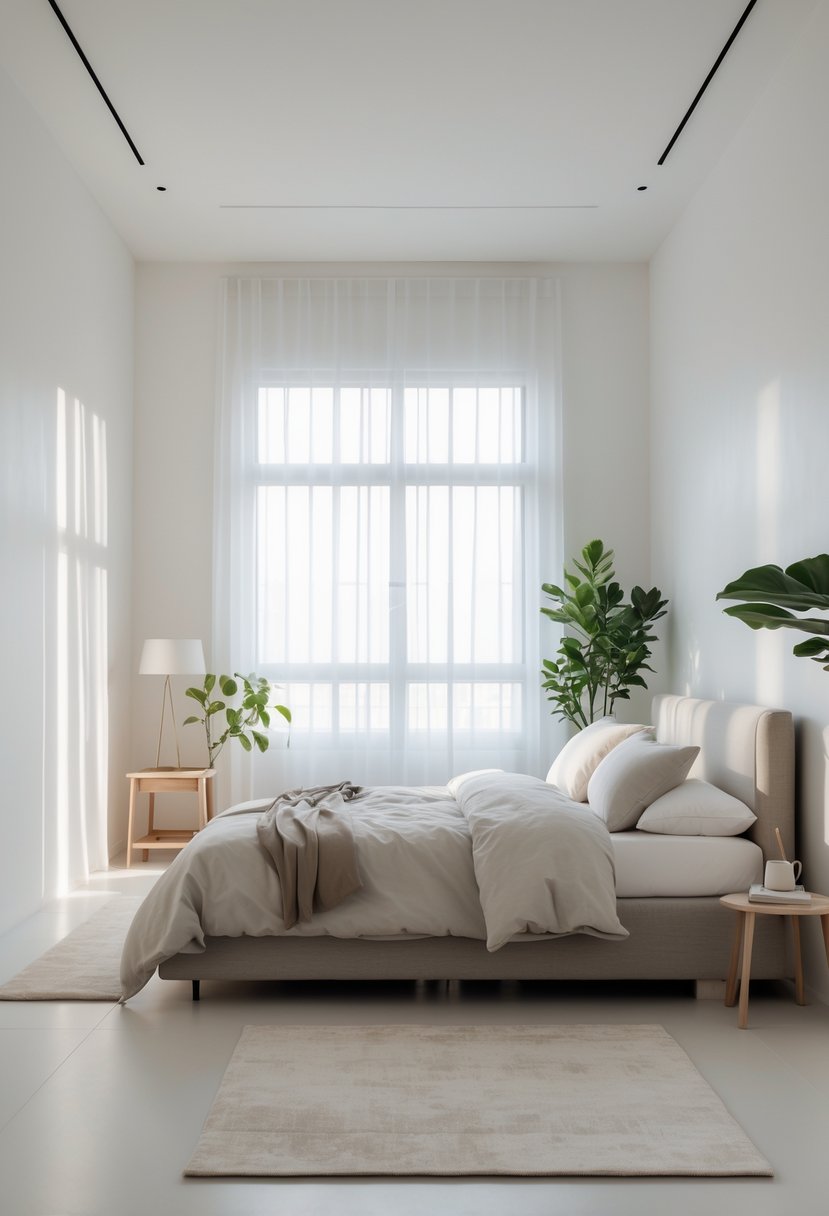
Minimalist bedroom decor focuses on simplicity, organization, and function. It uses specific colors, furniture, and storage methods to maintain a calm and open atmosphere. Lighting and art choices help keep the room balanced and uncluttered.
How can I maximize space in a small bedroom with minimalist decor?
Using furniture with built-in storage helps save space. Choosing pieces with clean lines and low profiles keeps the room feeling open.
Removing unnecessary items and keeping surfaces clear allows for easy movement. Mirrors can also create the illusion of a larger space.
What color palette is best for achieving a minimalist bedroom aesthetic?
Neutral colors like white, beige, gray, and soft earth tones work best. These colors create a calm and uncluttered look.
Using a limited palette with subtle variations helps maintain a cohesive, simple feeling.
What are the essential pieces of furniture for a minimalist bedroom?
A simple bed frame, ideally a platform or low-profile design, is key. A nightstand with clean lines and minimal detailing adds function without crowding.
A dresser or wardrobe with sleek doors and no extra hardware keeps the look neat. Avoid excess furniture to maintain openness.
How do I select artwork for a minimalist bedroom without cluttering the space?
Choose one or two pieces with simple designs or muted colors. Large, framed prints or abstract art work well when positioned thoughtfully.
Avoid small or numerous pieces that can overwhelm the room and break the clean aesthetic.
Can you suggest minimalist storage solutions for a bedroom?
Use under-bed storage containers or drawers to keep items out of sight. Built-in shelves and wall-mounted storage save floor space.
Choose furniture that doubles as storage, like a bed with drawers or a bench with internal space.
What lighting options work best to complement a minimalist bedroom design?
Soft, warm LED lights provide a non-harsh glow that enhances calmness. Simple fixtures like recessed lighting, slim floor lamps, or minimalist pendant lights blend in well.
Natural light is also important, so keep window treatments light and airy.

